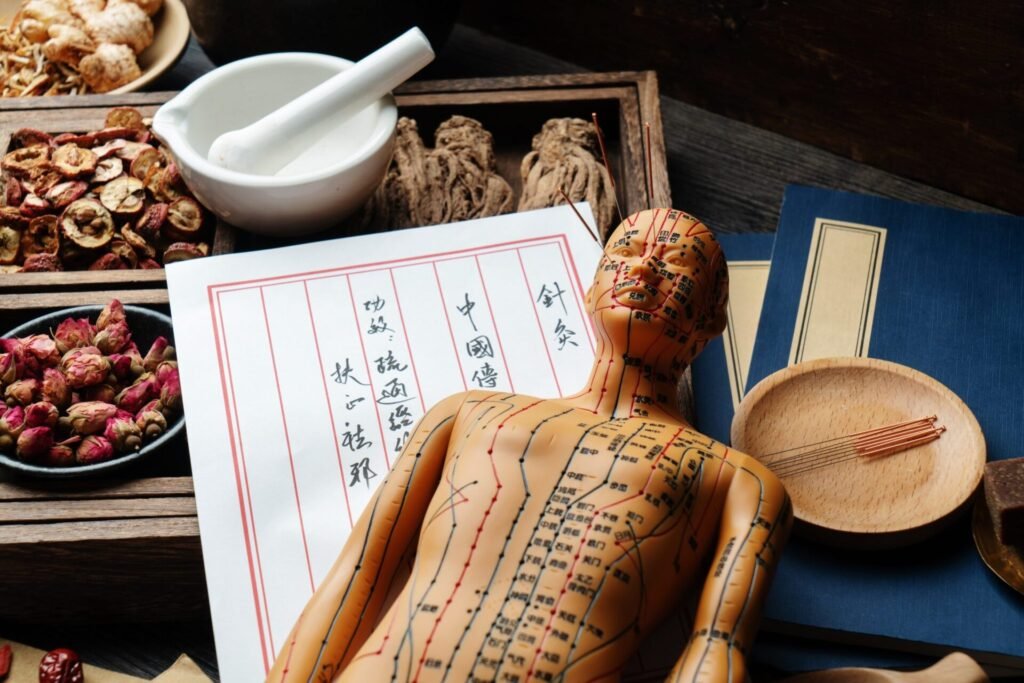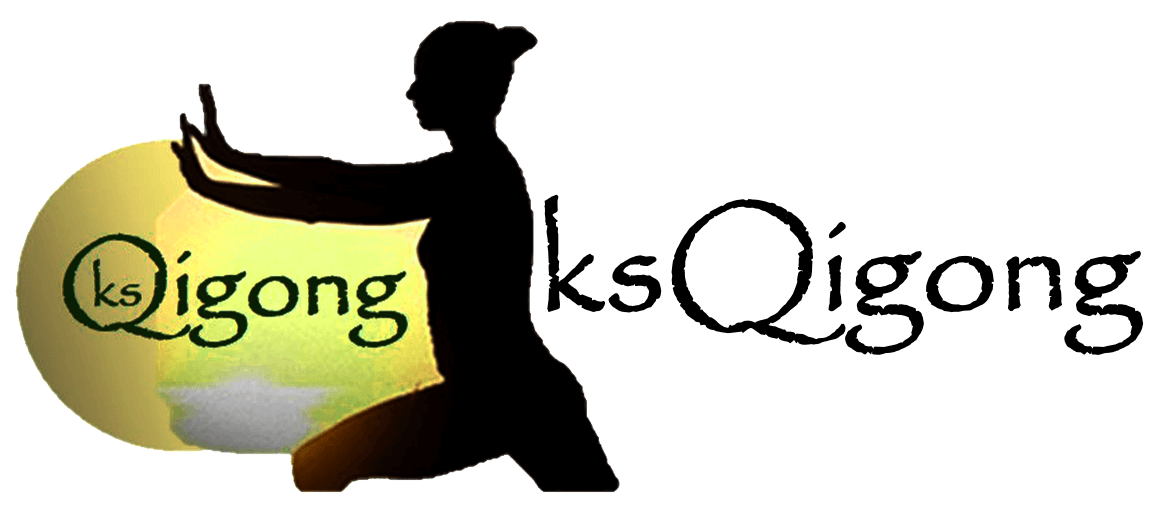
Qigong is founded on ancient wisdom and beliefs and has been gradually modified over the years, but it essentially retains the same system and knowledge that underlies Traditional Chinese Medicine (TCM). While the concept of Qi may not have a direct scientific basis, the practice of visualising and working with Qi is integral to the philosophy and principles of Qigong; the effectiveness of the training is often measured in terms of its impact on an individual’s overall sense of balance, relaxation and wellbeing.
Some of Qigong’s core beliefs are described below.
Chinese Cosmology underpin the Chinese Beliefs system around Qigong.
Chinese cosmology is a complex framework that encompasses various beliefs, including Buddhism, Taoism and Confucianism, which have influenced the development and philosophy of Qigong.
Here are some key elements of Chinese cosmology and belief systems that are relevant to Qigong:-
- Taoism (Daoism) and Buddhism: Taoism is an ancient Chinese philosophical and religious tradition that emphasises living in harmony with the Tao (“Dao”), which is often translated as “the Way” or the natural order of the universe. Qigong draws from Taoist principles, mainly that Qi (energy) flows through the body and the universe. Participants seek to align themselves with the Tao to achieve balance, health, and spiritual enlightenment.
- Qi (Chi): Qi, the energy or life force that flows through the body, is central to Chinese cosmology and Qigong practice.
- Yin and Yang: The concept of Yin-Yang represents the dualistic nature of the universe, where opposing forces are interconnected and interdependent. In Qigong, balance between Yin and Yang is crucial for harmonising the mind and body.
- Five Elements (Wu Xing): Chinese cosmology includes the belief in five elements—Wood, Fire, Earth, Metal and Water—which are associated with organs, seasons and various attributes. The practice of Qigong often incorporates principles related to the five elements to address imbalances and promote well-being.
- Meridians and Acupoints: Belief in a network of meridians (energy channels) through which Qi flows around the whole body. Acupoints are points along these meridians that can be stimulated through acupuncture, acupressure, or Qigong to regulate Qi flow and address health issues.
- Mind-Body Connection: Chinese cosmology emphasises the interconnection between the mind and body. Qigong uses mindfulness, meditation and visualisation to enhance this connection.
- Nature and the Environment: Chinese cosmology values the relationship between humans and the natural world. Practising Qigong in natural settings, such as parks or forests, is believed to enhance the connection with the energy of the Earth and the cosmos.
While Qigong is often associated with health benefits, its roots in Chinese cosmology extend to the broader philosophy of life, the cosmos and the interconnectedness of all things.
The Meridians in Qigong.


In Traditional Chinese Medicine (TCM) and thus Qigong as well, the concept of meridians, also known as “jingluo” or “energy channels,” plays a crucial role in guiding the flow of vital energy (qi) throughout the body. Meridians are considered to be pathways or channels through which qi flows, connecting various parts of the body, including organs, tissues, and acupressure points. There are 12 primary meridians and eight extraordinary meridians in TCM. These meridians are associated with different organs and energy functions. The primary meridians are particularly relevant to Qigong practice:
The 12 principal meridians in TCM, along with their associated organs, are as follows:
- Lung Meridian (Lu): This is associated with the lungs and is responsible for regulating respiration and the distribution of qi.
- Large Intestine Meridian (LI): Associated with the large intestine and plays a role in the elimination of waste and maintaining intestinal health.
- Stomach Meridian (St): Associated with the stomach and digestive processes, influencing nutrient absorption.
- Spleen Meridian (Sp): This is associated with the spleen and pancreas and is responsible for digestion, energy production, and blood circulation.
- Heart Meridian (Ht): This is associated with the heart and is responsible for circulating blood and controlling mental and emotional functions.
- Small Intestine Meridian (Si): This is associated with the small intestine and plays a role in separating clear and turbid fluids for digestion.
- Bladder Meridian (Bl): This is associated with the bladder and is involved in waste elimination and maintaining fluid balance.
- Kidney Meridian (Ki): This is associated with the kidneys and is responsible for water metabolism and regulating growth and development.
- Pericardium Meridian (Pc): This is associated with the pericardium and heart and plays a role in emotional balance and blood circulation.
- Triple Warmer / Burner Meridian (San Jiao or Tb): A meridian that affects various bodily functions and is associated with the regulation of fluids and temperature.
- Gallbladder Meridian (Gb): Associated with the gallbladder and in the digestion of fats and decision-making.
- Liver Meridian (Liv): This is associated with the liver and is responsible for regulating the flow of qi and emotions and detoxifying the body.
Qigong practice often focuses on the cultivation, circulation, and balance of qi within these meridians. Various Qigong exercises and movements stimulate and harmonise energy flow through these channels, promoting health, relaxation, and vitality. While some Qigong exercises target specific meridians or organs, others aim to balance the entire system.
The understanding of meridians and their role in Qigong is deeply rooted in Chinese philosophy and medicine. Participants work with their meridians to enhance energy flow, address health concerns, and promote their overall well-being.
The body’s main nerve points in Qigong.

In Qigong, the concept of acupressure points, also known as acupoints or meridian points, plays a significant role in guiding energy (qi) flow and promoting health and well-being. These points are often used in Qigong practice to facilitate the circulation of qi and balance the body’s energy. Here are some of the main nerve points and acupressure points commonly used in Qigong:-
- Dantians: See below, the three Dantians (Lower, Middle, and Upper Dantians) are significant focal points in Qigong, serving as energy centres for the cultivation and storage of qi.
- Lao-gong Point (PC-8): Located in the centre of the palm, the Lao-gong point is often used in Qigong to connect with the heart meridian and enhance the flow of qi throughout the body.
- Huiyin Point (CV-1): Situated at the perineum, this point is crucial for grounding and connecting with the body’s energy centre. It is also linked to the conception vessel.
- Yong-quan Point (KD-1): Located on the sole of the foot, the Yong-quan point is essential for grounding and promoting energy circulation throughout the body.
- Ling-tai (CV-10): Positioned in the centre of the chest, the Lingtai point is associated with the heart meridian and is used in Qigong to cultivate emotional balance.
- Shanzhong Point (CV-17): This point is located in the centre of the chest, at the level of the fourth intercostal space. It is associated with the upper Dantian and is used to cultivate spiritual and mental energy.
- Baihui Point (GV-20): Situated at the top of the head, the Baihui point is associated with the Governing Vessel (Du Mai) and is used for spiritual connection and higher consciousness in Qigong.
- Lao-gong Point (SI-8): This point is located on the forearm, near the elbow. It is often used in Qigong to promote the circulation of qi in the arm meridians.
- Hegu Point (LI-4): Located between the thumb and index finger, the Hegu point is often used in Qigong to alleviate headaches and promote energy flow in the body.
- Zusanli Point (ST-36): Found below the knee on the outside of the leg, the Zusanli point is a well-known acupressure point for enhancing overall vitality and energy circulation in Qigong.
These are just a few examples of the many acupressure points used in Qigong practice; 1, 2 and 4 (above) are the most important. The specific points utilised may vary depending on the style of Qigong and the practice’s goals. It’s essential to learn and apply these points correctly, as they can be powerful tools for promoting health, relaxation, and the balanced flow of energy within the body*.
(Ref: * Vera, F. M., Manzaneque, J. M., Rodríguez, F. M. M., Bendayan, R., Fernández, N., & Alonso, A. (2015). Acute Effects on the Counts of Innate and Adaptive Immune Response Cells After 1 Month of Taoist Qigong Practice. International Journal of Behavioural Medicine. https://doi.org/10.1007/s12529-015-9509-8 ).
NB: While there are believed to be around 361 nerve points in the Chinese system (some quote over 2,000!), the main ones (12) are listed above. My own preference is to work on the meridians (of which there are 14) rather than individual nerve points, this is because locating actual nerve points is often quite difficult, many are too close together to be accessible by most people. More importantly, Traditional Chinese Medicine is based on holistic healing, so that healing any one part cannot be done in isolation without reference to the whole (mind and body), which makes meridians more relevant as they cover main areas of the body and work together; otherwise working on single points can possibly transfer the issue elsewhere, to another node or point, thus defeating the objective; exercising the meridians with Qigong moves, for me, provides the best chance for a total (holistic) solution, based on harmony across the tissues and organs, and all parts that make up the human body. We do some work with the key points (as above), but this is always in co-ordination with the meridians on which they are based. We also use various acupressure points for tapping when using the Emotional Freedom Technique (see EFT); this has a different, beneficial effect (lowering of negative emotional states) on the psyche than the precise healing from that point.
The ‘Dantians’ in Qigong.
There are three Dantians in the human body:
- Lower Dantian (Qihai Xia Dantian) – Primary Dantian.
- Location: The Lower Dantian (Qihai, Chinese or Hara, Japanese) is approximately two inches (2 – 3 fingers) below the navel, in the lower abdomen, and 2 – 3 fingers in.
- Energetic Function: It is often called the “Sea of Qi” and is associated with storing vital energy (qi) for physical strength, grounding, and stability. It is believed to be the body’s primary source of physical and sexual/reproductive energy and is the main axis root of its energy system flow.
- Movement: In Qigong and martial arts, the Lower Dantian is considered the body’s centre of gravity and a key point for generating and storing energy for physical movements.
- Middle Dantian (Tan Zhong Dantian).
- Location: The Middle Dantian is located at the solar plexus (below sternum/breastbone). (NB: Some believe it is located in the Heart region, in the middle of the chest).
- Energetic Function: It is associated with cultivating emotional and mental energy, including compassion, love, and empathy. It is considered the centre of emotional balance and harmony.
- Upper Dantian (Yin Shang Dantian).
- Location: The Upper Dantian is positioned on the forehead, in between the eyebrows, at the location of the ‘third eye’ in the Yogic system.
- Energetic Function: It is associated with cultivating spiritual and mental energy, including wisdom, insight, and intuition. The Upper Dantian is considered the centre of higher consciousness and transcendent awareness. It also points to the Pineal Gland, inside the brain, where melatonin is created.
It’s important to note that while these energy centres are recognised in Qigong, Martial Arts, and TCM, they are not anatomical structures in the same way that organs or tissues are. Instead, they represent energetic centres and serve as focal points for cultivating and directing the flow of vital energy throughout the body.
Note that these three Dantians correspond to the Sacral, Solar-Plexus and Third-Eye Chakras respectively, in the Indian yogic system of seven main chakras. “Chakra” is a word in Sanskrit that means “wheel” or “cycle.” Chakras are seen as spinning wheels or circles that life energy flows through. When your chakras are in balance, life energy is able to move through them and connect you to the world around you; thus they are akin to the Dantians.
Qigong practices often involve visualising, breathing into, or focusing on these Dantians to facilitate the circulation and balance of qi within the body.
__________________________
The Chinese Five Elements (‘Wu Xing’).





Traditional Chinese cosmology and philosophy have five fundamental elements, often called the ‘Five Elements’. These elements represent various aspects of the natural world and are associated with specific attributes, such as seasons, colours, organs, etc.
The Five Elements are:
- Wood (Mu, 木): Wood represents growth, expansion, and creativity. It is associated with spring, green, and the liver and gallbladder in traditional Chinese medicine. Wood is also linked to qualities like flexibility, adaptability, and assertiveness.
- Fire (Huo, 火): Fire symbolises transformation, energy, and passion. It is associated with summer, red, and the heart and small intestine. The Fire element is linked to enthusiasm, joy, and communication.
- Earth (Tu, 土): Earth represents stability, nourishment, and balance. It is associated with the late summer, yellow, spleen, and stomach. Earth embodies qualities such as nurturing, grounding, and reliability.
- Metal (Jin, 金): Metal signifies clarity, precision, and strength. It is associated with autumn, white or metallic colours, and the lungs and large intestine. Metal embodies qualities such as organisation, discipline, and purity.
- Water (Shui, 水): Water symbolises adaptability, fluidity, and depth. It is associated with winter, blue or black, and the kidneys and urinary bladder. Water is linked to qualities like wisdom, introspection, and resourcefulness.
These five elements are a part of Chinese cosmology and play a significant role in traditional Chinese medicine, acupuncture, Feng Shui and various aspects of Chinese culture and philosophy. They describe the interrelationships between different elements of the natural world, including the cycles of creation and destruction, and to understand the balance and harmony of the human body and the environment, especially our affinity with nature.



